How does one define a writer? Can we define her in fragments? Is she always a novelist, a poet, a lyricist, or a non-fiction researcher? All of the above is the correct answer, I believe. Marilyn was a 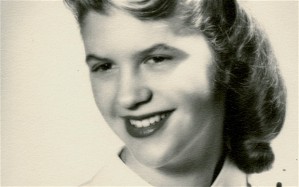 poet. She wrote in fragments, (at times so did renowned poet Elise Cowen), meaning not all at once. Sometimes, on an impulse, she grabbed a paper napkin or a piece of hotel stationery, and scribbled her thoughts and emotions. She saved them from time to time although I suspect many were thrown away, unfortunately. She may have kept a “red diary” but I do not believe it was filled with secrets about JFK, regardless of rumour. I believe if the diary existed (and to this day it has never been found) it expressed her experiences as an actress, a struggling model, and a lonely child. She may have drawn pictures to accompany her writings. Occasionally Marilyn did draw and although the work was not good in an artistic sense, it touched the heart emotionally.
poet. She wrote in fragments, (at times so did renowned poet Elise Cowen), meaning not all at once. Sometimes, on an impulse, she grabbed a paper napkin or a piece of hotel stationery, and scribbled her thoughts and emotions. She saved them from time to time although I suspect many were thrown away, unfortunately. She may have kept a “red diary” but I do not believe it was filled with secrets about JFK, regardless of rumour. I believe if the diary existed (and to this day it has never been found) it expressed her experiences as an actress, a struggling model, and a lonely child. She may have drawn pictures to accompany her writings. Occasionally Marilyn did draw and although the work was not good in an artistic sense, it touched the heart emotionally.
There are numerous parallels between Marilyn Monroe, her writings, her art and those of famous literary women who have committed suicide in the 20th century. Few of these women were glamorous or beautiful. Many weren’t known by their real identities since the early to mid-20th Century was a time of great prejudice against women in many respects. Some women used pen names and these were always male. Like Marilyn they had to adopt secret identities in order to be taken seriously.
I’ve written about the many parallels Marilyn shared with Sylvia Plath in Marilyn: Fragments of Suicide Notes. I will not reiterate that blog. Instead I have researched other well-known women writers who committed suicide (a number who were also mentally ill), and I offer a literary comparison with the woman who was (and arguably is) the sex goddess of the 20th Century. Had Marilyn realized the parallel between herself and these women she might have been greatly comforted.
Virginia Woolf
I hope Marilyn won’t hate me for this one since Elizabeth Taylor, her mortal enemy, starred in a movie entitled Whose Afraid of Virginia Woolf? (although unrelated to the actual writer). Woolf, herself a beautiful woman, had a tormented early life, just as Marilyn. She was sexually abused for eight years by her cousin. When she tried to tell a relative she wasn’t believed. One didn’t discuss such things during the Victorian Era. It simply didn’t exist. Woolf wrote many novels, “fictional autobiographies” and poems about her experiences as a woman whose talent went unrecognized. She wanted desperately to attend university; this was also denied to women if their husbands or fathers disapproved. Marilyn’s education was neglected in her early life, as this opportunity wasn’t readily available to her.
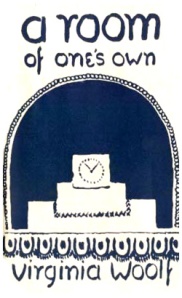 One of Woolf’s most poignant essays was a novel entitled A Room of One’s Own. It was based on a series of lectures. While this extended essay employs a fictional narrator to explore women as writers, the manuscript is of the series of lectures, so the essay is considered non-fiction. The essay is generally seen as a feminist text. It is an argument for a chance for women writers to thrive within a literary tradition dominated by patriarchy. The title of the essay comes from Woolf’s belief that, ‘a woman must have money and a room of her own if she is to write fiction’. Woolf notes that women have been kept from writing because of their relative poverty, and financial freedom will bring women the freedom to write; “in the first place, to have a room of her own.” The essay examines whether women were capable of producing, and in fact free to produce, work of the quality of William Shakespeare, addressing the limitations women writers face.
One of Woolf’s most poignant essays was a novel entitled A Room of One’s Own. It was based on a series of lectures. While this extended essay employs a fictional narrator to explore women as writers, the manuscript is of the series of lectures, so the essay is considered non-fiction. The essay is generally seen as a feminist text. It is an argument for a chance for women writers to thrive within a literary tradition dominated by patriarchy. The title of the essay comes from Woolf’s belief that, ‘a woman must have money and a room of her own if she is to write fiction’. Woolf notes that women have been kept from writing because of their relative poverty, and financial freedom will bring women the freedom to write; “in the first place, to have a room of her own.” The essay examines whether women were capable of producing, and in fact free to produce, work of the quality of William Shakespeare, addressing the limitations women writers face.
The similarities to Marilyn’s wish to be taken seriously as a dramatic actress are unmistakable. It was essential that she act a dramatic script (writing) if she was to prove the scope of her acting ability. In that sense, Marilyn too was fighting to have the right to produce art in her own independent manner. It was partly a patriarchal industry (Fox) that proved to be an obstacle to her goals.Woolf wrote a work entitled “The Four Marys“: “Mary Beaton, Mary Seton, or Mary Carmichael”, alluding to the sixteenth century ballad Mary Hamilton. It tells the story of a woman about to be hanged for existing outside of marriage and rejecting motherhood. Marilyn struggled in her first two marriages: both husbands tried to end her career as it exhibited too much independence from the marriage. It was a sad irony that she married her first husband to escape being returned to an orphanage. She never had children and although she seemed so inclined during her marriage to Miller, it was apparent that in the start of her career, she was not interested at all in motherhood. in fact, Marilyn to having 12 abortions to a number of friends.
 In The Four Mary’s, Woolf another section, described the work of Mary Carmichael, Woolf invoked lesbianism: “Then may I tell you that the very next words I read were these – ‘Chloe liked Olivia…’ Do not start. Do not blush. Let us admit in the privacy of our own society that these things sometimes happen. Sometimes women do like women.” This was a brave statement at the time and one that would have been rejected outright by men. Rumours that Marilyn was a lesbian or at the very least bisexual followed her all of her life. At one time she herself stated to an interviewer about her acting coach Natasha Lytess: “I would let a person do anything to me if I thought they were my friend.” On another occasion Marilyn lamented “if I had a cock Natasha would never leave me alone!” It is a known fact that DiMaggio intensely disliked Lytess as he suspect the two women of having a lesbian relationship.
In The Four Mary’s, Woolf another section, described the work of Mary Carmichael, Woolf invoked lesbianism: “Then may I tell you that the very next words I read were these – ‘Chloe liked Olivia…’ Do not start. Do not blush. Let us admit in the privacy of our own society that these things sometimes happen. Sometimes women do like women.” This was a brave statement at the time and one that would have been rejected outright by men. Rumours that Marilyn was a lesbian or at the very least bisexual followed her all of her life. At one time she herself stated to an interviewer about her acting coach Natasha Lytess: “I would let a person do anything to me if I thought they were my friend.” On another occasion Marilyn lamented “if I had a cock Natasha would never leave me alone!” It is a known fact that DiMaggio intensely disliked Lytess as he suspect the two women of having a lesbian relationship.
Her parents had each been married previously and been widowed, and, consequently, the household contained the children of three marriages. Woolf’s half-sister by her mother, Laura Makepeace Stephen, was declared mentally disabled (a polite term for “insane) and lived with the family until she was institutionalised in 1891 (shades of Marilyn’s occasional entry into mental institutions and Glady’s lifelong confinement as a schizophrenic).Woolf committed suicide due to clinical depression,and bouts of mental illness that were posthumously identified as bipolar disorder. She committed suicide by drowning herself in 1941 at the age of 59. Her suicide note to her husband read: Dearest, I feel certain that I am going mad again. I feel we can’t go through another of those terrible times. And I shan’t recover this time. I begin to hear voices, and I can’t concentrate. So I am doing what seems the best thing to do. I can’t fight any longer.”
Anne Sexton
Sexton was an American poet, known for her highly personal, confessional verse. She won the Pulitzer Prize for poetry in 1967 for her book Live or Die. Themes of her poetry include her long 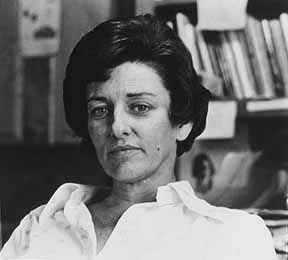 battle against depression and mania, and suicidal tendencies. Listen to her reading of Wanting to Die. Sexton was obsessed with death particularly after her father died, three months after her mother’s. After a second episode of a mental breakdown in 1955 she met Dr. Martin Orne, who became her long-term therapist at the Glenside Hospital. Of course, bipolar disorder, mental breakdowns, and suicidal tendencies were a Marilyn trademark. It was Dr. Orne who encouraged Sexton to take up poetry. Better literary advice was never given.Sexton felt great trepidation about registering for the class, asking a friend to make the phone call and accompany her to the first session. The echo of Marilyn’s fears about acting are strong.
battle against depression and mania, and suicidal tendencies. Listen to her reading of Wanting to Die. Sexton was obsessed with death particularly after her father died, three months after her mother’s. After a second episode of a mental breakdown in 1955 she met Dr. Martin Orne, who became her long-term therapist at the Glenside Hospital. Of course, bipolar disorder, mental breakdowns, and suicidal tendencies were a Marilyn trademark. It was Dr. Orne who encouraged Sexton to take up poetry. Better literary advice was never given.Sexton felt great trepidation about registering for the class, asking a friend to make the phone call and accompany her to the first session. The echo of Marilyn’s fears about acting are strong.
In spite of Sexton’s many awards and poetry successes,on October 4, 1974, Sexton had lunch with with a friend to revise galleys for Sexton’s manuscript of The Awful Rowing Toward God, scheduled for publication in March 1975 (Middlebrook 396). On returning home she put on her mother’s old fur coat, removed all her rings, poured herself a glass of vodka, locked herself in her garage, and started the engine of her car, committing suicide by carbon monoxide poisoning. In an interview over a year before her death, she explained she had written the first drafts of The Awful Rowing Toward God in twenty days with “two days out for despair and three days out in a mental hospital.” She stated she would not allow the poems to be published before her death, a sad foreshadowing of her eminent suicide. Marilyn was not as fixated as Sexton on death but she certainly expressed suicide during many moments in her life. She knew the experience of mental illness. Had she and Sexton met, I believe they would have been sympathetic to each other’s experience and therefore good friends. LCIW certainly could find helpful research in Sexton’s many writings.
May Ayim
Ayim suffered the sort of unhappy childhood Marilyn lived. Ayim was the daughter of Ursula Andler and Emmanuel Ayim. Her father, a Ghanian medical student wanted to have her raised by his childless sister, but German law denied him any say in the matter as he was not married to her mother. After a brief stay in a children’s home, she was adopted by the Opitz family, who raised her with their biological children. She had an unhappy childhood, as her strict adoptive parents used violence to control what they regarded as her deviant behaviour. This was a matter she took up later in some of her poems. While May Ayim maintains that she was thrown out of the family home at the age of nineteen, this is denied by the family. She still kept in touch with the Opitz family for reasons only she knew. Personally I would have left and never looked back.. Perhaps Ayim’s insistence on remaining close with her abusive family was an attempt to fight loneliness. Ayim’s childhood was so similar to Marilyn Monroe’s that it is uncanny.
 Eventually she adopted her father’s name Ayim as her pen name. She was active as an educator and writer, taking part in many conferences and publishing Blues in schwarz-weiss (Blues in Black and White).May Ayim’s poem “They’re People Like Us“ is cited in Paul Beatty‘s 2008 novel Slumberland. Marilyn once commented to an interviewer in reference to black people, “we’re all brothers under the skin.” After spending sometime without sleep or proper meals preparing for Black History Month in 1996, she suffered a mental and physical collapse. She was admitted to the psychiatric ward of the Auguste Viktoria Hospital in Berlin in January 1996. Despite many supportive visitors she remained despondent and when her vision problems were examined the doctors came up with diagnosis of multiple sclerosis. Certainly the diagnosis added to her despair but how much of it was created by the loneliness of her childhood before the diagnosis? Her medication for psychosis and neuroleptica was stopped and she was discharged in April 1996. She still suffered from depression and was readmitted in June, following a suicide attempt. Discharged again in July, she killed herself by jumping from the thirteenth floor of a Berlin building. A sadder ending couldn’t have been created for a novel.
Eventually she adopted her father’s name Ayim as her pen name. She was active as an educator and writer, taking part in many conferences and publishing Blues in schwarz-weiss (Blues in Black and White).May Ayim’s poem “They’re People Like Us“ is cited in Paul Beatty‘s 2008 novel Slumberland. Marilyn once commented to an interviewer in reference to black people, “we’re all brothers under the skin.” After spending sometime without sleep or proper meals preparing for Black History Month in 1996, she suffered a mental and physical collapse. She was admitted to the psychiatric ward of the Auguste Viktoria Hospital in Berlin in January 1996. Despite many supportive visitors she remained despondent and when her vision problems were examined the doctors came up with diagnosis of multiple sclerosis. Certainly the diagnosis added to her despair but how much of it was created by the loneliness of her childhood before the diagnosis? Her medication for psychosis and neuroleptica was stopped and she was discharged in April 1996. She still suffered from depression and was readmitted in June, following a suicide attempt. Discharged again in July, she killed herself by jumping from the thirteenth floor of a Berlin building. A sadder ending couldn’t have been created for a novel.
Dorothy Jean Guggenheim
Lisa Howard was born Dorothy Jean (coincidence) Guggenheim in Cambridge, Ohio. She moved to Los Angeles at age eighteen and joined the Pasadena Playhouse.. From there she pursued a film and television career. In 1953, the entertainment magazine People Today featured 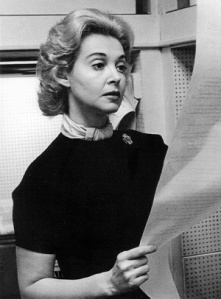 her on its front page, calling her “TV’s First Lady of Sin“. After moving to New York City, Howard starred in the off-Broadway show, ‘Tis Pity She’s a Whore. In 1961 she was hired by ABC News as their first female correspondent to cover the Vienna Summit between Khrushchev and John F. Kennedy. (Another parallel with Marilyn). On her return to the United States, she was debriefed by CIA deputy director, Richard Helms. In a secret memorandum of conversation sent to President Kennedy, Helms reported: “Lisa Howard definitely wants to impress the U.S. Government with two facts: Castro is ready to discuss rapprochement and she herself is ready to discuss it with him if asked to do so by the U.S. Government.”
her on its front page, calling her “TV’s First Lady of Sin“. After moving to New York City, Howard starred in the off-Broadway show, ‘Tis Pity She’s a Whore. In 1961 she was hired by ABC News as their first female correspondent to cover the Vienna Summit between Khrushchev and John F. Kennedy. (Another parallel with Marilyn). On her return to the United States, she was debriefed by CIA deputy director, Richard Helms. In a secret memorandum of conversation sent to President Kennedy, Helms reported: “Lisa Howard definitely wants to impress the U.S. Government with two facts: Castro is ready to discuss rapprochement and she herself is ready to discuss it with him if asked to do so by the U.S. Government.”
Howard became smitten with Castro (as Marilyn herself did with another political figure) and viewed herself as a grand player on the stage of history (rather like exposing the President in the media and viewing oneself as the next First Lady). In order to continue the reconciliation agenda, she set up a meeting between UN diplomat William Attwood and Cuba’s UN representative Carlos Lehuga on September 23, 1963, at her Upper East side New York apartment, under the cover of a cocktail party.In September 1964, Howard helped form a political group called “Democrats for Keating”, a group of liberal Democrats that included Gore Vidal, who opposed Robert Kennedy’s bid to become a U.S. senator representing the state of New York. ABC News warned her that her public partisan politics would lead to her dismissal. Howard ignored this warning and continued to work openly in support of Kennedy’s Republican opponent, Kenning Keating. In the fall of 1964, ABC cancelled her news show and fired Howard. Devastated by the loss of her career, Howard suffered a miscarriage in early 1965 and was hospitalized with depression. On July 4, 1965, while on an Independence Day vacation in the Hamptons with her family, she took an overdose of barbiturates and died. Marilyn too was concerned about the loss of her career in the weeks before she committed suicide. Fox had fired her from the movie Something’s Got to Give. It was rumoured she was re-hired after several weeks but there is nothing to substantiate the rumour. Marilyn suffered many miscarriages in her lifetime and was certainly devastated by each.
Beatrice Hastings aka Emily Alice Haigh
Beginning with a pseudonym to further her career, Norma Jeane Baker knew what it was to deny her original identity. Hastings, a literary critic, writer and poet, published a lot of her work under a variety of 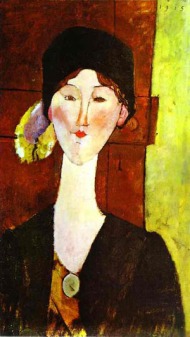 pseudonyms. Bisexual, Hastings was a lover of Katherine Mansfield, whose own work was published in the New Age. Just before the war, Hastings moved to Paris and shared an apartment with Amedeo Modigliani. She was a subject for his paintings. Eventually Hastings was excluded from literary circles, which she felt was her due. By her own admission, Beatrice had “a temper not to be trifled with”. So did Marilyn who once stated, “Poor Arthur (Miller). I could be so violent and angry.” She had met Orage at a theosophical lecture in London in 1906. “Afterwards, in the smoking room, I rallied him on his perverse loquacity (of the which I later detected every trick).” They became friends and before long “Aphrodite had amused herself at our expense”. For the next ten years Beatrice poured her vitriolic wit into the New Age on social and moral subjects, not least the ‘Woman Question’.In 1914 Beatrice abandoned Orage for Amadeo Modigliani with whom she had a tempestuous relationship in Montparnasse. Marilyn herself had many tempestuous relationships with men and particularly her husbands. She nevertheless remained faithful to the New Age, contributing vivid and sometimes surreal ‘Impressions de Paris’.
pseudonyms. Bisexual, Hastings was a lover of Katherine Mansfield, whose own work was published in the New Age. Just before the war, Hastings moved to Paris and shared an apartment with Amedeo Modigliani. She was a subject for his paintings. Eventually Hastings was excluded from literary circles, which she felt was her due. By her own admission, Beatrice had “a temper not to be trifled with”. So did Marilyn who once stated, “Poor Arthur (Miller). I could be so violent and angry.” She had met Orage at a theosophical lecture in London in 1906. “Afterwards, in the smoking room, I rallied him on his perverse loquacity (of the which I later detected every trick).” They became friends and before long “Aphrodite had amused herself at our expense”. For the next ten years Beatrice poured her vitriolic wit into the New Age on social and moral subjects, not least the ‘Woman Question’.In 1914 Beatrice abandoned Orage for Amadeo Modigliani with whom she had a tempestuous relationship in Montparnasse. Marilyn herself had many tempestuous relationships with men and particularly her husbands. She nevertheless remained faithful to the New Age, contributing vivid and sometimes surreal ‘Impressions de Paris’.
She blamed Orage for what she believed was a conspiracy to keep her out of British literary circles. Certainly, Marilyn felt ill-treated by 20th Century Fox, believing they were responsible for her firing from Something’s Got to Give. She also felt they’d mistreated her in many ways for 13 years. She published a pamphlet, The Old New Age, bitterly criticising Orage in 1936. In 1943, ravaged by age and drink; ill; impoverished spurned by the literary establishment, Beatrice burned her correspondence, stuffed a towel under the door, cradled her little white mouse in her hand and turned the gas on. She was also possibly suffering from stomach cancer. Marilyn’s suicide was on the heels of her betrayal by both JFK and Fox. She too spoke bitterly of her career with her studio.
Elise Cowen
Cowen was an American poet. Cowen wrote poetry from a young age. As a young woman she was introduced to Allen Ginsberg by philosophy professor Donald Cook. The two discovered a mutual acquaintance in Carl Solomon, whom they had both met while spending time separately in 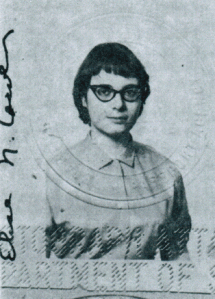 a mental hospital.Ginsberg would meet and fall in love with Peter Orlovsky, his eventual life partner. Despite this, Cowen remained emotionally attached to Ginsberg for the rest of her life. In February 1956, she and her lover Sheila (a pseudonym) moved into an apartment with Ginsberg and Orlovsky. At the time Cowen had a job as a typist. She was fired and was removed from the office by the police. She later told her close friend Leo Skir that one of the officers hit her in the stomach. When informed she had been arrested, her father said, “This will kill your mother.” While in San Francisco, (the city where DiMaggio chose to live out his life), Cowen became pregnant and underwent a hysterotomy during a late-stage abortion. Marilyn certainly knew about female reproductive issues. It was believe she suffered from endometriosis, a condition where the lining of the uterus grows outside of it.
a mental hospital.Ginsberg would meet and fall in love with Peter Orlovsky, his eventual life partner. Despite this, Cowen remained emotionally attached to Ginsberg for the rest of her life. In February 1956, she and her lover Sheila (a pseudonym) moved into an apartment with Ginsberg and Orlovsky. At the time Cowen had a job as a typist. She was fired and was removed from the office by the police. She later told her close friend Leo Skir that one of the officers hit her in the stomach. When informed she had been arrested, her father said, “This will kill your mother.” While in San Francisco, (the city where DiMaggio chose to live out his life), Cowen became pregnant and underwent a hysterotomy during a late-stage abortion. Marilyn certainly knew about female reproductive issues. It was believe she suffered from endometriosis, a condition where the lining of the uterus grows outside of it.
A lifelong depressive, Cowen began to be afflicted by increasingly severe psychological breakdowns, eventually being admitted to Bellevue Hospital in order to obtain treatment for hepatitis and psychosis. Bellevue is famous from many literary, film and television references, and as the training ground for many of America’s leaders in medicine. Cowen checked herself out against doctors’ orders and returned to her parents’ apartment on Bennett Avenue. At her parents’ home she committed suicide, jumping through the locked living room window and falling seven stories to the ground. A volume of work from her only surviving notebook, titled Elise Cowen: Poems and Fragments, (indeed) was published in 2014 by Ahsahta Press. Fourteen of Cowen’s shorter poems are included in the “Short Poem Dossier” of the 2012 issue of Court Green.
Charlotte Perkins-Gilman
Perkins-Gilman wrote and published many works but she is best known for her semi-autobiographical short-story The Yellow Wallpaper, about a women who enters a mental institution 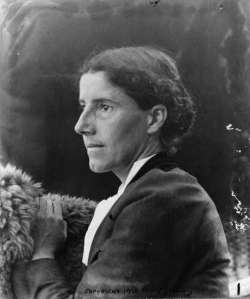 and goes mad. “The Yellow Wallpaper” was essentially a response to the doctor who had tried to cure her of her depression through a “rest cure”,She was a novelist, writer of short stories, poetry, and nonfiction, and a lecturer for social reform. Much like Marilyn, during Charlotte’s infancy, her father moved out and abandoned his wife and children, leaving them in an impoverished state. Since their mother was unable to support the family on her own, the Perkinses were often in the presence of aunts on her father’s side of the family, Much like Gladys, Perkins’ mother was not affectionate with her children. To keep them from getting hurt as she had been, she forbade her children to make strong friendships. Gilman wrote that her mother showed affection only when she thought her young daughter was asleep. Although she lived a childhood of isolated, impoverished loneliness, she unknowingly prepared herself for the life that lay ahead by frequently visiting the public library and studying ancient civilizations on her own.She attended seven different public schools, Marilyn attended six.
and goes mad. “The Yellow Wallpaper” was essentially a response to the doctor who had tried to cure her of her depression through a “rest cure”,She was a novelist, writer of short stories, poetry, and nonfiction, and a lecturer for social reform. Much like Marilyn, during Charlotte’s infancy, her father moved out and abandoned his wife and children, leaving them in an impoverished state. Since their mother was unable to support the family on her own, the Perkinses were often in the presence of aunts on her father’s side of the family, Much like Gladys, Perkins’ mother was not affectionate with her children. To keep them from getting hurt as she had been, she forbade her children to make strong friendships. Gilman wrote that her mother showed affection only when she thought her young daughter was asleep. Although she lived a childhood of isolated, impoverished loneliness, she unknowingly prepared herself for the life that lay ahead by frequently visiting the public library and studying ancient civilizations on her own.She attended seven different public schools, Marilyn attended six.
In 1884, she married after initially declining the marriage proposal because a gut feeling told her it was not the right thing for her. Her only child, Katharine Beecher Stetson, was born the following year. Charlotte Perkins Gilman suffered a very serious bout of post-partum depression in the months after Katharine’s birth. This was an age in which women were seen as “hysterical” and “nervous” beings; thus, when a woman claimed to be seriously ill after giving birth, her claims were sometimes dismissed as being invalid.In 1888, Charlotte separated from her husband, a rare occurrence in the late nineteenth century. The two legally divorced in 1894. Marilyn was divorced three times in her life. In 1894, Gilman sent her daughter east to live with her former husband and his second wife, Grace (McKee?) Ellery Channing, who was a close friend of Gilman’s. In January 1932, Gilman was diagnosed with incurable breast cancer. An advocate of euthanasia for the terminally ill, Gilman committed suicide on August 17, 1935 by taking an overdose of chloroform. In both her autobiography and suicide note, she wrote that she “chose chloroform over cancer” and she died quickly and quietly
Although beautiful, sexy and glamorous, Marilyn Monroe was also a literary writer, a dramatic artist, a singer, visual artist, and a dancer. She ran her own film company entitled Marilyn Monroe Productions inc and produced two films through the company. She worked with renowned actors, directors, literary figures, and playwrights. The “dumb blonde” image was far from accurate. This was a brilliant woman who orchestrated her own career from a humble childhood, modelling jobs that exploited her, domineering men who sought to control her, to becoming the most famous celebrity in Hollywood in spite of battling mental illness. Her legend, like many of the aforementioned female writers and poets, lives on eternally.